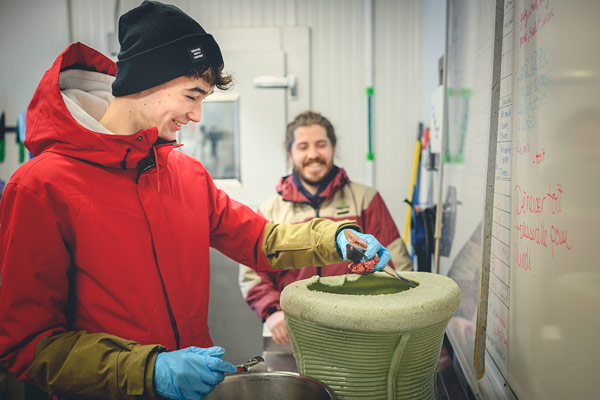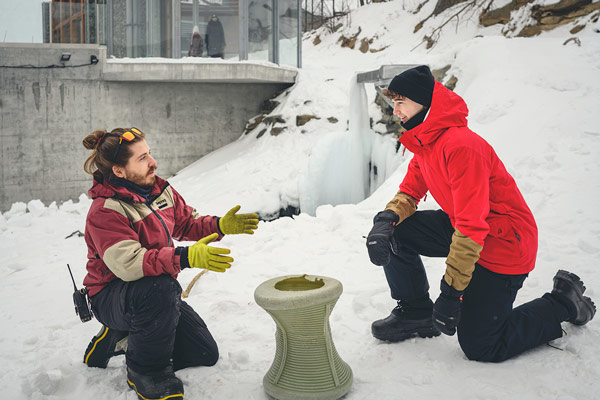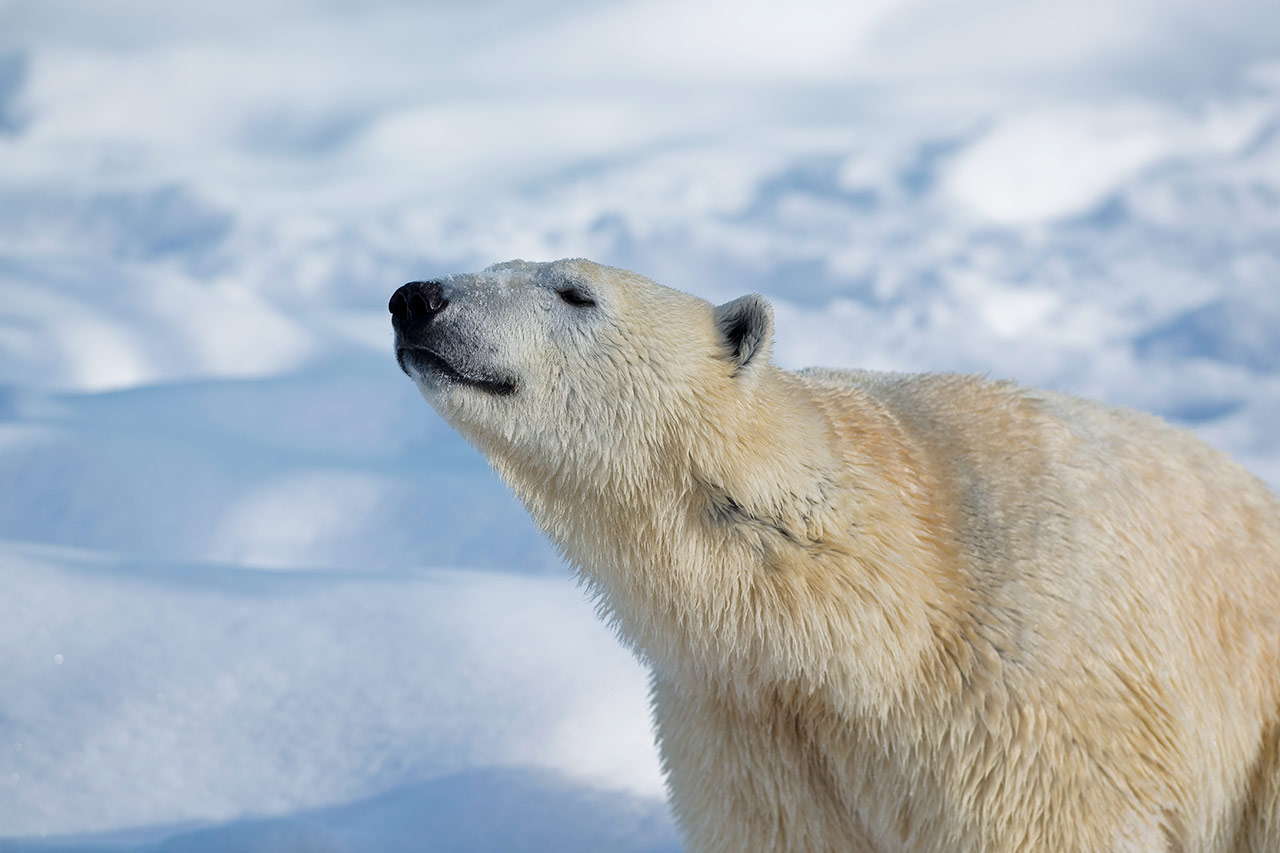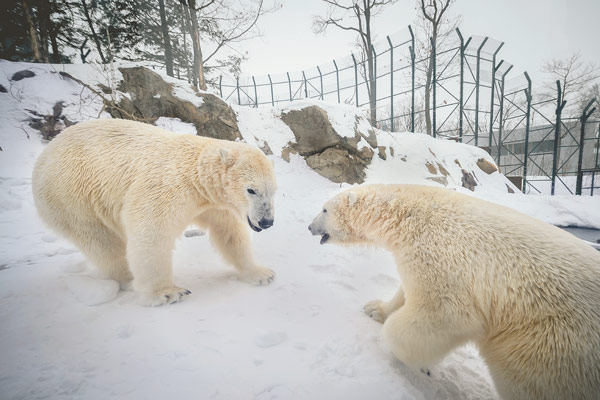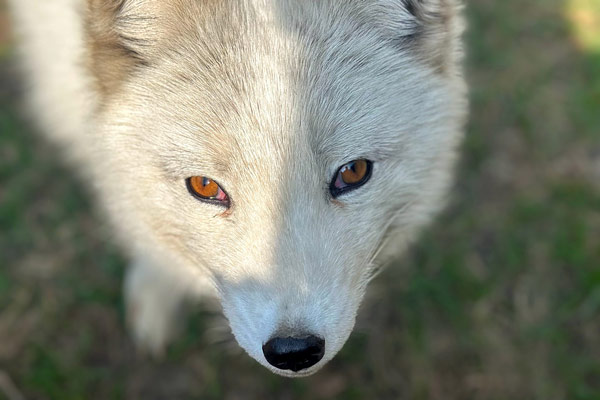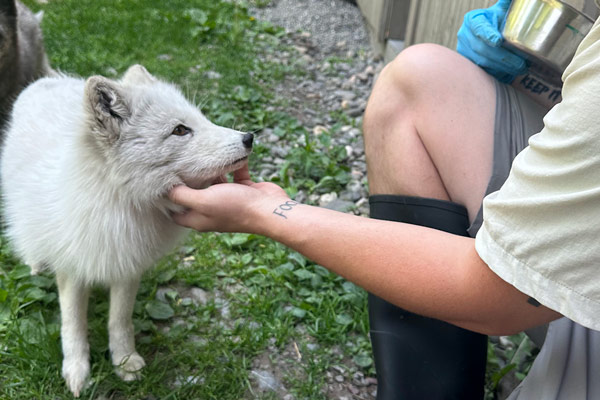Soft-hearted polar bear trainer
With his long hair and friendly face, Félix Labrosse has all the makings of a really cool guy. Nothing would lead you to believe that he trains the world's largest predator, the polar bear. This marine mammal trainer from Aquarium du Québec gets amazing results with animals. His secret: positive reinforcement.
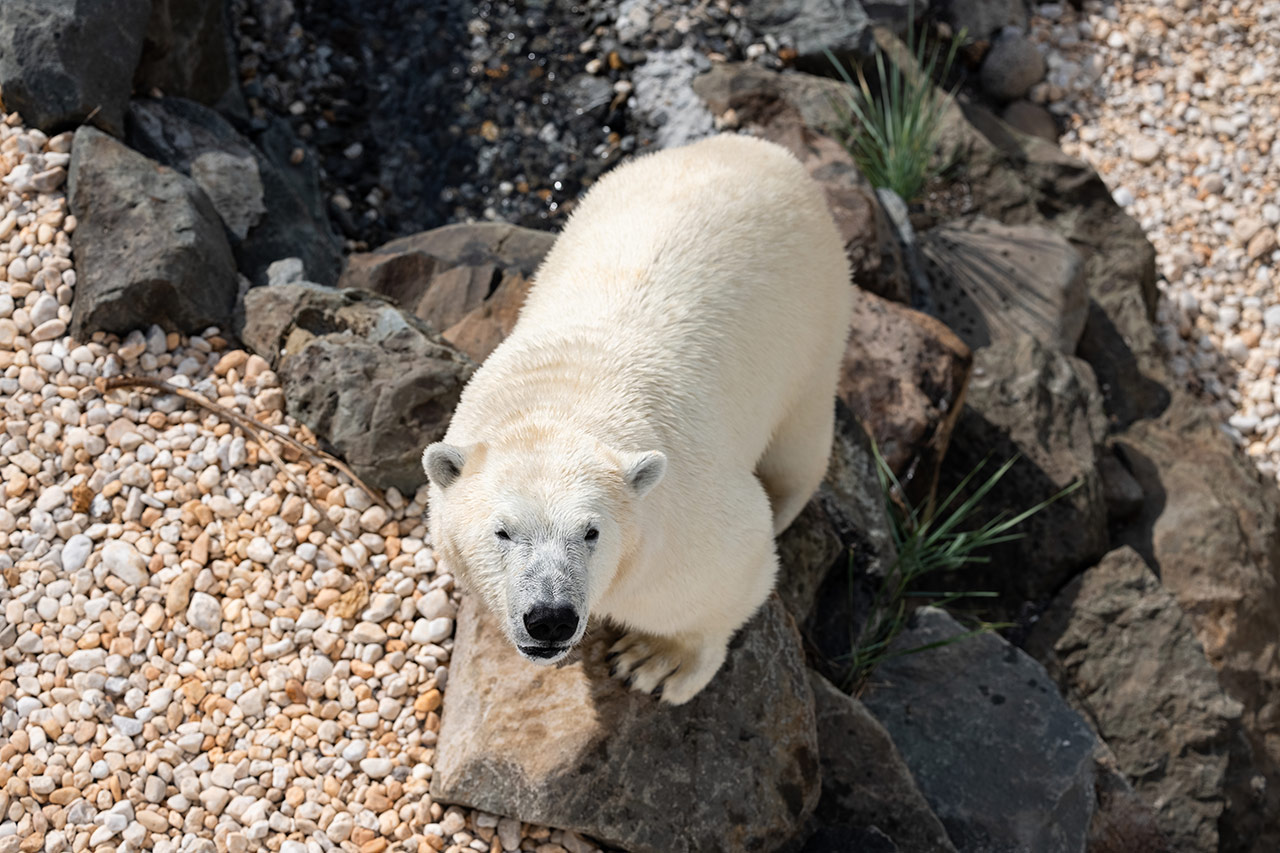 Aquarium du Québec
Aquarium du Québec
Even though he's only 29 years of age, Félix has a wealth of expertise under his belt, or rather in the pocket of his beige animal guide uniform! His adventure began at the age of 18, when he joined the Société protectrice des animaux (SPA) Beauce-Etchemin. This was when he adopted his beautiful Jeanne d'Arc, a two-and-a-half-year-old Labrador female born in an illegal puppy mill. When she turned up at the shelter, he fell in love with her at first sight.
Understanding hairy beasts
Then, at Les Fidèles Moustachus shelter in Québec City, Félix continued his career with stray and lost pets. To hone his interventions, he also began private training with animal behavior specialist Jacinthe Bouchard. Behavioral psychology, training, managing aggression and deviant behaviors, animal health – there was a whole lot to learn.
With all sorts of new knowledge under his belt, Félix launched his own business. He travelled to people's homes to provide advice tailored to their pets. But there was something deep down inside him that remained to be fulfilled: the desire to work with large mammals.
A major challenge: polar bears
In 2019, Félix’s dream came true! At the age of 25, he joined the team at Aquarium du Québec as a marine mammal animal guide. From the moment he arrived, he worked with a vast array of animals, including birds of prey, seals, walruses, and Arctic foxes.
During his first year, he received a weighty assignment indeed! He was tasked with looking after the polar bears, Eddy and Taiga, who were being transferred to the Cochrane Polar Bear Habitat in Ontario, due to work starting at the Aquarium for the purposes of doubling the size of their habitat.
An extraordinary experience
Before agreeing to go to Ontario for three months, he set just one condition: he had to bring along Jeanne d'Arc! His request was accepted, and what followed was a highly formative experience.
Although he had never worked with polar bears at the time, he learned all about them from an experienced colleague at the Cochrane Polar Bear Habitat. "There was an incredible curator who knew everything... polar bear biology, as well as their behavior in captivity and in the wild. I asked him every question that came to mind. In terms of sharing knowledge, it was an extraordinary experience," he recounts.
Upon Eddy’s return to the Aquarium, Félix would become his assigned companion, so that their beautiful relationship is flourishing still.
The "little" newcomers!
Over the years, two more polar bears have moved into the newly renovated habitat: Kinuk and Shouka, two cubs from the Zoo sauvage de Saint-Félicien. Félix is charged with caring for Shouka. He considers this to be his greatest professional challenge to date.
It has to be said that Shouka is not known for being an "easy" bear! "We have a passionate relationship. I love him to pieces, and at the same time, sometimes he really gets my goat! He has an explosive temperament. As soon as he gets food, he becomes very aggressive," admits the trainer. With patience, Félix and his colleagues in charge of marine mammals have managed to attenuate these aggressive behaviors.
The Shouka mystery
Even though he's been looking after Shouka for almost three years, the animal still fascinates him. "Once he's calmed down, he's super intelligent. Sometimes, in just two sessions, he masters new behaviors that we’ve begun teaching him," affirms Félix proudly.
Rolling over, standing up on two feet, sticking a shoulder to the fence to receive a vaccine or for a voluntary blood test... biomedical training sessions are bearing fruit. This avoids the need for administering anesthesia without the animal's cooperation.
"It's much less traumatic for them and promotes their well-being. That's very important to me. It's our duty to take care of them, just as we would look after our pets. You have to ensure that an animal's quality of life is as rich as possible, whatever the situation," insists the trainer.
His Josephine
Félix has a new crush these days: Joséphine, one of the three Arctic foxes who recently arrived at the Aquarium. His attachment to her knows no bounds.
"Her temperament is one of a kind. She used to bite me when she first arrived, but we got over that. I have a really close relationship with her," he describes affectionately.
It's clear that the trainer has a real passion for his atypical profession. When asked what he finds most difficult with animals, he replies, pensively, "For me, there's nothing insurmountable with each species I train. With positive reinforcement, you can fix anything; the sky’s the limit! You always have to retrace the root of problem behaviors, a feat that you can pull off with time."
Passing the torch
The trainer has big plans for the future. He would like to give training courses to those who want to learn more about animal training. It's a way for him to give back to the next generation, with all the baggage he's acquired over the years from different mentors. And his secret to remaining as passionate and amazed as ever? Quite simply, to keep his childlike heart.
